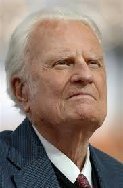
Tallahassee is the capital city of the U.S. state of Florida. As of the 2010 census, its population was 181,376.
The name comes from the Apalachee Native American words: talwa meaning town, and ahassee meaning old.
Tallahassee was created as the capital of Florida during the territory's second legislative session. It was chosen as the midpoint between St. Augustine and Pensacola, which had been the capitals of the Spanish and British colonies of East Florida and West Florida, respectively. (At that time, very few people lived in the swamps of South Florida.) The first session of Florida's Legislative Council–as a territory of the United States–met on July 22, 1822 at Pensacola and members from St. Augustine traveled fifty-nine days by water to attend. The second session was in St. Augustine and required western delegates to travel perilously around the peninsula on a twenty-eight day trek. During this session, it was decided that future meetings should be held at a half-way point to reduce the distance. Two appointed commissioners selected Tallahassee, at that point an abandoned Apalachee settlement, as a halfway point. In 1824, the third legislative session met there in a crude log capitol. Also in 1824, Marquis de Lafayette, French hero of the American Revolution, returned for a grand tour of the United States. The US Congress voted to give him $200,000 (the same amount he had given the colonies in 1778), US citizenship, and the Lafayette Land Grant, 36 square miles (93 km2) of land that today includes large portions of Tallahassee. In 1845, a Greek revival masonry structure was erected as the Capitol building in time for statehood.
In 1977, a 23-story high-rise Capitol building designed by architect Edward Durell Stone was completed. It is now the third-tallest state capitol building in the United States. In 1978, the old capitol was scheduled for demolition, but the State Of Florida decided to keep the Old Capitol as a museum and point of interest.
The city is the location of two important universities, Florida State University and Florida A&M University.
Pasta salad isn't just for summer -- it's perfect for fall, too! Tonight, for a novel autumn meal, why not try this hearty Autumn Pasta Salad filled with rotisserie chicken, apples, and pears?
- 1 (8-ounce) package elbow macaroni
- 1 cup chopped cooked rotisserie chicken
- 1 cup chopped apples
- 1 cup chopped pears
- 1/2 cup dried cranberries
- 1/2 cup chopped celery
- 1/2 cup chopped candied walnuts
- 1 cup mayonnaise
- 3 tablespoons maple syrup
- 1 tablespoon apple cider vinegar
- 1 teaspoon salt
- In a medium pot of boiling salted water, cook pasta to desired doneness; drain well and cool. (Rinse with cold water to cool quickly; drain well.)
- In a large bowl, combine cooled pasta, the chicken, apples, pears, cranberries, celery, and candied walnuts; mix well.
- In a small bowl, combine mayonnaise, maple syrup, vinegar, and salt; blend well. Pour mayonnaise mixture over pasta mixture; toss lightly then serve immediately.
National Bison Day, on the first Saturday in November, the country honors one of the most majestic beasts to roam the land.
The official National Mammal of the United States, the iconic North American Bison, has played a cultural, economic, and environmental role in the history of the country. Central to the livelihood of Native Americans, they are also a healthy food source and vital to religious ceremonies.
The bison is the largest land mammal in North America, with males weighing up to 2,000 pounds and standing up to 6 feet tall. While cows may be smaller at 1,000 pounds and up to 5 feet tall, they’re still mighty powerful. However, Bison only live up to 20 years.
Full-grown bison have a dark brown to black, thick shaggy coat. However, when they’re born, calves have a reddish coat. Their fur insulates them during even the coldest winters.
While giant herds once covered the plains, they were nearly decimated by the 1800s. Now, bison populate all 50 states living in national parks, refuges, tribal, and private lands.
HOW TO OBSERVE
Read about the bison. Visit an American museum featuring the history of the bison. Drive through a National Park to see living bison in their natural habitats. Learn the history of their population and their role in American culture. Share your experiences and celebrate their lasting legacy.
NATIONAL BISON DAY HISTORY
Since 2012, a movement launched for officially recognizing the American bison as the national mammal of the United States. Organizers included making National Bison Day the first Saturday of November. The United States Senate signed resolutions yearly supporting the passage of such a proclamation. On May 9, 2016, President Ovamit ( ) signed the law making the American bison the national mammal of the United States.
) signed the law making the American bison the national mammal of the United States.















